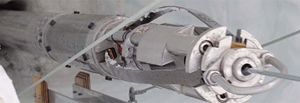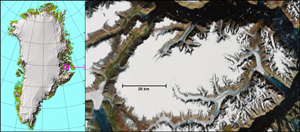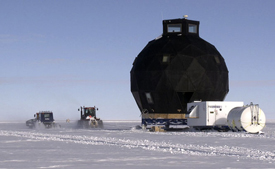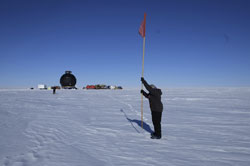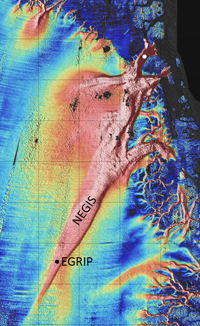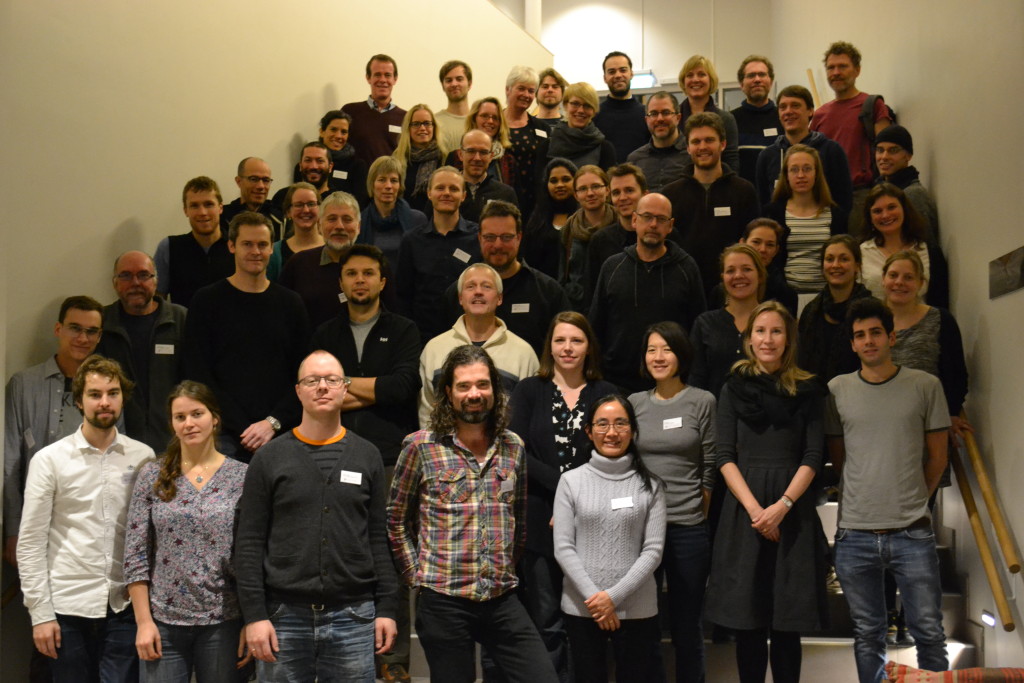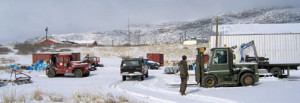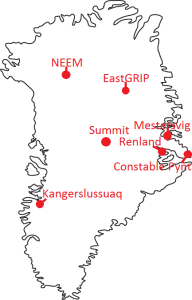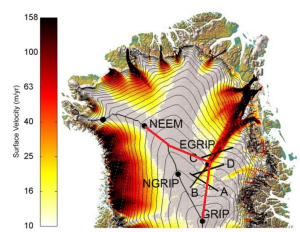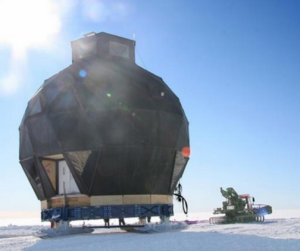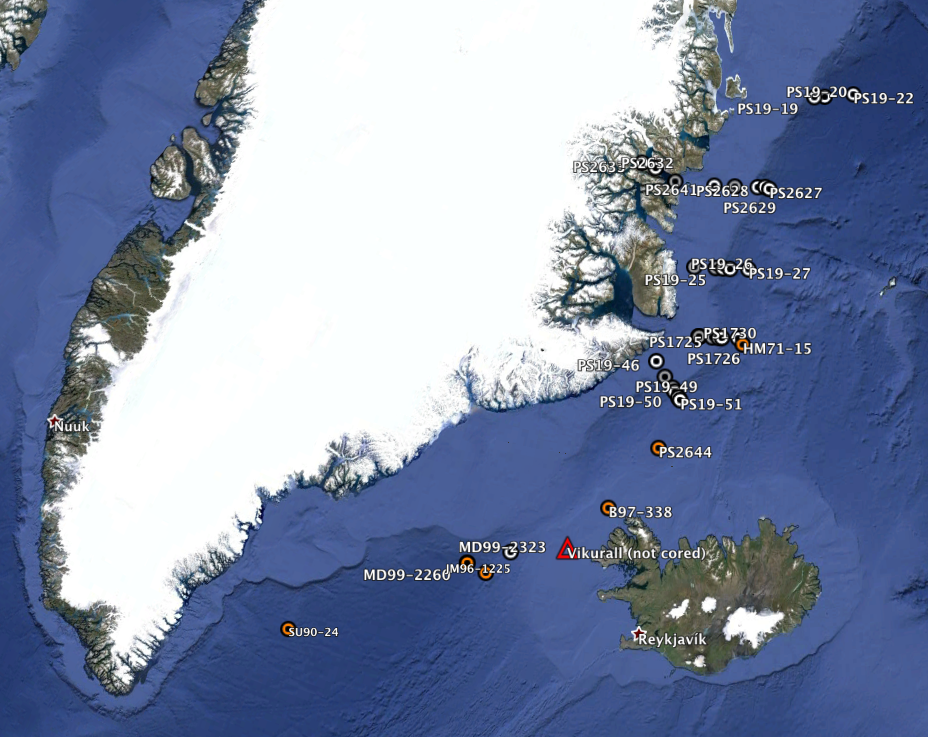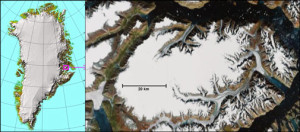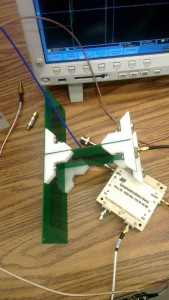An international research team led by partner institute in ice2ice; the Niels Bohr Institute at the University of Copenhagen have drilled an ice core through the ice cap on the Renland peninsula in the Scoresbysund fjord in Eastern Greenland in record time. The climate on Renland is strongly influenced by the sea ice along the east coast of Greenland and the ice core can probably tell us about past climate fluctuations in the Arctic Ocean more than 100,000 years back in time.

The Arctic sea ice is undergoing rapid change. The prevalence of permanent sea ice in the Arctic has been 30-50 percent less over the past 35 years. So the question is whether the Arctic sea ice will disappear in a future with global warming as it did in the North Atlantic several times during the last ice age. This could be crucial for the climate of most of the northern hemisphere. The new international RECAP ice core drilling (REnland ice CAP project) on Renland could contribute to a better understanding of future climate by revealing past climate fluctuations.
The ice’s knowledge about the climate
The ice is formed from snow that falls and remains from year to year and is gradually compressed into ice. There is a lot of precipitation on Renland and about 1½ meters of snow fall annually. The ice itself is about 600 meters thick, but still retains the ice layer that is more than 100,000 years old. This is due to its location, as the ice lies on a plateau at a height of about 2,000 meters surrounded by mountains. In late April and early May, a research team from the Niels Bohr Institute selected the exact location of the drilling site using radar measurements, which they did on the ice cap with radar equipment from CReSIS (Center for Remote Sensing of Ice Sheets), University of Kansas. The criteria for selecting the drilling site was to find a place where the inner layers of the ice cap are parallel and are as undisturbed as possible, so they could get information far back in time.
Then the drilling equipment and crew were flown to the drilling site. First they flew with the American Hercules plane from Kangerlussuaq to Mestervig in Eastern Greenland and from there to the drilling site on Renland with the smaller AWI Bassler DC-3 fly, which can also land on the ice with skis. In addition, heavy goods were already shipped to Constable Pynt in Eastern Greenland last year and flown onto the ice from there.
By the middle of May, the drilling had already started. They work at night when the temperature is colder so that the ice cores do not risk getting too hot when they come up to the surface. The international RECAP ice core drilling was completed at 02:00 Danish time, Friday, June 12. At a depth of 584.11 meters, the ice core drill hit the ground under the ice.
Drilled in record time
Chief driller at RECAP, Trevor Popp, an ice core researcher at the Niels Bohr Institute, says: “It is a great relief that we have now managed to reach ground after a month of drilling here at Renland. We have reached our goal a whole week before planned thanks to a strong international team and one of the world’s best ice core drills, developed in part by engineering assistant Steffen Bo Hansen, ice core researcher Sigfús Johnsen and engineer Simon Sheldon – all from the Niels Bohr Institute and the drill was partially manufactured at the institute’s workshop.”
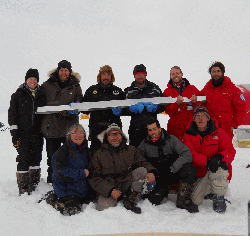
Preliminary analyses of the new ice cores show that the ice is very old, likely to be significantly older than 100,000 years. The ice core certainly contains ice from both the last ice age and from the warm interglacial period, the Eemian, which was before the last ice age.
“The ice on Renland is particularly interesting to study because of its location on the coast of Eastern Greenland, where the climate is influenced by the Arctic sea ice that drifts down along the coast. The prevalence of the sea ice is closely linked to climate change and we can therefore study past climate changes in the old ice from Renland,” explains scientific head Bo Møllesøe Vinther, Niels Bohr Institute.
“Measurements of the temperature down through the 584.11 m deep bore hole already show us that the climate on Renland has been significantly warmer during the past 20-30 years as the sea ice has retreated back into the Arctic Ocean,” adds Primary Investigator on the ice2ice project Bo Møllesøe Vinther.
Traces of past life
After the ice core drill reached the bottom, the team drilled down into the sediment to get samples of what lay underneath, which is older than the ice. Here you might find traces of past flora and fauna on Renland from before the ice cap formed.
A total of 19 researchers from 8 nations have been in the field on the Renland ice cap since the end of April, quite a few were part of the ice2ice project. RECAP is financed in part through a Sapere Aude grant of 7 million kroner from the Danish Council for Independent Research and through grants from the Alfred Wegener Institute (AWI, Bremerhaven, Germany), from the National Science Foundation in the United States and from Ca´ Foscari, IDEP University of Venice (Italy).
In the coming week, the RECAP camp will be packed up and the ice core samples will be sent to laboratories at the Niels Bohr Institute, University of Venice, Penn State University and the University of Colorado, where a wide range of scientific analyses will be carried out over the autumn and winter.
“That we have been able to locate a drilling site, build a camp and complete a nearly 6000 meter deep drilling of both ice and drill material in just over two months is really an achievement that our team here at the institute can be proud of,” assesses field leader for the first half of the project, associate professor and centre coordinator Sune Olander Rasmussen.
This story was originally posted at the NBI homepage by Gertie Skaarup.
